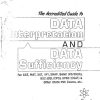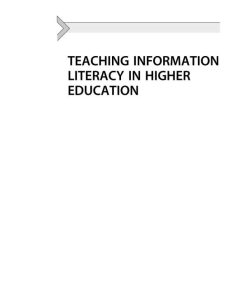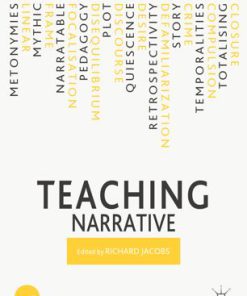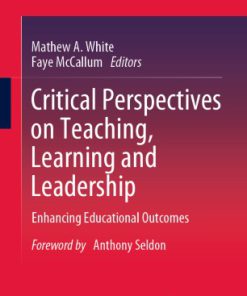Critical Teaching Behaviors Defining Documenting and Discussing Good Teaching 1st Edition by Lauren Barbeau, Claudia Cornejo Happel 1000980738 9781000980738
$50.00 Original price was: $50.00.$25.00Current price is: $25.00.
Critical Teaching Behaviors Defining Documenting and Discussing Good Teaching 1st Edition by Lauren Barbeau, Claudia Cornejo Happel – Ebook PDF Instant Download/DeliveryISBN: 1000980738, 9781000980738
Full download Critical Teaching Behaviors Defining Documenting and Discussing Good Teaching 1st Edition after payment.
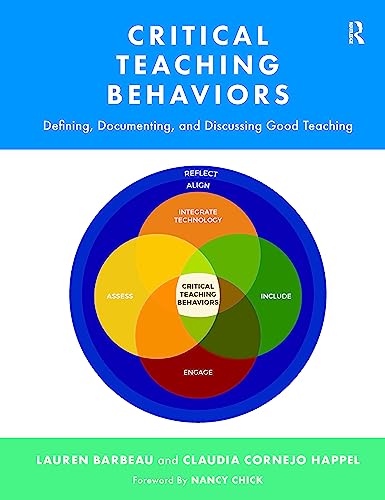
Product details:
ISBN-10 : 1000980738
ISBN-13 : 9781000980738
Author: Lauren Barbeau, Claudia Cornejo Happel
What does “good” teaching mean, and how can we know it when we see it? Perhaps you have grappled with these questions at some point in your career, either as an instructor wanting to document or grow your teaching effectiveness or as a peer or administrator trying to provide guidance to or assess the teaching of others.This book serves three purposes: a condensed, evidence-based guide to effective teaching; a resource on creating a focused teaching narrative and teaching portfolio; and a toolkit that equips faculty to conduct peer observations, student midterm feedback, and productive conversations related to teaching. The first part of the book offers a rich guide as to what constitutes effective teaching based on a comprehensive review of the research on instructional strategies and behaviors that promote student engagement, learning, and success. It includes practical advice flexible enough to accommodate disciplinary and contextual differences, recognizing that readers will want to adapt effective behaviors based on their values and dispositions.The opening chapters successively cover aligning classroom activities to learning goals; teaching inclusively to account for students’ prior learning and diversity; creating an environment that promotes students’ active engagement in learning and taking responsibility for their intellectual development; assessing students’ progress and adjusting teaching accordingly; using technology effectively; and finally engaging in reflective self-assessment with feedback from peers and students to adjust and develop teaching skills. In the second part of the book, the authors offer structured guidance on developing a focused teaching narrative, gathering peer and student feedback to support that narrative, and curating a portfolio to showcase exemplary practices and achievements. The insights and tools presented also equip readers to facilitate classroom peer observations and gather midterm student feedback. Overall, the second part of the book provides readers with a common language and tools to use when discussing teaching with peers and those who may formally or informally observe their teaching. The book builds to providing the reader with a clear sense of the criteria and evidence needed to document their teaching for the purposes of annual review, promotion, or tenure.The now widely recognized Critical Teaching Behaviors (CTB) framework offers a holistic means of documenting and assessing teaching effectiveness by including a variety of evidence and perspectives. The comprehensive feedback and documentation toolkit aligned to the framework incorporates more of the instructor’s perspective on their own teaching into the evaluation process and substitutes for or supplements student evaluations of teaching (SETs). Administrators will also find the CTB useful as a template and guide for the objective evaluation of teaching.In a single volume, this book offers faculty evidence-based guidance and encouragement to explore effective teaching strategies whether they are just embarking on their college teaching journey or are experienced instructors looking to explore new ideas. The CTB presents instructors a roadmap to both developing teaching skills and demonstrating achievements in promoting student learning to advance their careers. It is designed to be an interactive workbook. While readers can choose to read passively, they will get the most value from this book by completing the prompts and activities along the way.
Critical Teaching Behaviors Defining Documenting and Discussing Good Teaching 1st Table of contents:
1 Align
What Do We Know?
What Do We Do?
What Do We Show?
Reflection Questions
References
2 Include
What Do We Know?
Build Community and Relational Trust
Decode Pathways to Success and Connect Students With Resources
Use Learner-Centered Strategies in Course Design and Delivery
Select Content and Activities That Honor and Integrate Diverse Voices, Perspectives, and Experiences
Remove Barriers to Success
Assess Personal Biases and Mitigate Their Potential Impact on Student Learning and Success
What Do We Do?
What Do We Show?
Reflection Questions
References
3 Engage
What Do We Know?
Communicating Regularly, Openly, and Transparently
Designing Course Activities to Intentionally Promote Student–Content, Student–Instructor, and Student–Student Engagement
Using Varied Instructional Strategies to Engage All Students
Foster Self-Regulated Learning
Relate Course Content to Relevant Examples and Applications
What Do We Do?
What Do We Show?
References
4 Assess
What Do We Know?
Aligning Assessments With Course Learning Goals and Class Activities
Summative and Formative Assessments—A Short Introduction
Schedule Regular Summative Assessments to Measure Student Progress Toward Learning Outcomes
Embed Formative Assessments and Opportunities for Self-Assessment in Instruction and Scaffolding of Projects to Support Learning
Communicate Purpose, Task, and Criteria for Assessments to Help Motivate Students and Engage With Expectations in a Productive Way
Provide Timely, Constructive, and Actionable Feedback to Students
Alternative Grading Models and Ungrading
Review Assessment Data to Make Informed Decisions About Course Content, Structure, and Activities
What Do We Do?
What Do We Show?
Reflection Questions
References
5 Integrate Technology
What Do We Know?
Select Limited and Relevant Technologies
Leverage Technology to Increase Access, Facilitate Ease of Use, and Optimize the Student Learning Experience
Use Technology Effectively and Efficiently
Train Students to Use Instructional Technology and Provide Support
Consider Pedagogical Needs Relevant to Instructional Modality
Ensure Materials and Tools Meet Legal Requirements
What Do We Do?
What Do We Show?
Reflection Questions
References
6 Reflect
What Do We Know?
Assess Personal Growth
External Perspectives on Teaching
Engage With Scholarship and Professional Development Related to Teaching
Plan for Personal Growth by Identifying Categories for Development and Setting Goals
Conduct Research on Teaching and Learning
What Do We Do?
What Do We Show?
Reflection Questions
References
Part Two: Applications of the Critical Teaching Behaviors Framework
7 Identifying Your Core Value
What Is My Core Teaching Value?
Write
Draw
Talk
Review
What Is My Core Value Category?
8 Peer Observation
What Are the Benefits of Effective Peer Observations?
Reflection and Growth
Confidence and Community
Equity and Fairness
Problems and Pitfalls
How Does the CTB Observation Protocol Promote Effective Peer Observation?
Reflection and Growth
Confidence and Community
Equity and Fairness
Purpose, Modality, and Discipline
What Is the CTB Process for Conducting Peer Observations?
Preobservation
During Observation
Postobservation
Report Form
Debriefing the Observation
How Can You Adapt the CTB Observation Protocol to Your Needs?
Chapter Takeaways
Notes
References
9 Midterm Student Feedback
What Are the Benefits of Effective GIFTs?
Instructor Reflection and Growth
Student Motivation and Satisfaction
Institutional Community and Belonging
What Are the Instructor Benefits of the CTB GIFT Protocol?
Streamlining and Focus
Qualitative and Quantitative Data
Instructor Reflection and Voice
Purpose, Modality, and Discipline
What Is the CTB Process for Conducting GIFTs?
Presession
Leading a Student Feedback Session
Report Form
Debrief
How Can You Adapt the CTB GIFT to Meet Your Needs?
Chapter Takeaways
Notes
References
10 Creating a Narrative of Teaching Effectiveness
Why Do We Document Teaching Effectiveness?
How Do We Document Teaching Effectiveness?
How Can the CTB Help You Document Teaching Effectiveness?
Connecting Core Value to Teaching Behaviors
Select Evidence That Captures Behaviors
Creating an Aligned Narrative
People also search for Critical Teaching Behaviors Defining Documenting and Discussing Good Teaching 1st:
what are the principles of critical pedagogy
critical teaching behaviors
documenting behavior
documenting behavior in the classroom
documenting behavior interventions
Tags: Critical Teaching, Behaviors, Discussing Good, Lauren Barbeau, Claudia Cornejo Happel
You may also like…
Education Studies & Teaching - School Education & Teaching
Education Studies & Teaching - School Education & Teaching
Politics & Philosophy - Social Sciences
Education Studies & Teaching
Education Studies & Teaching - School Education & Teaching


